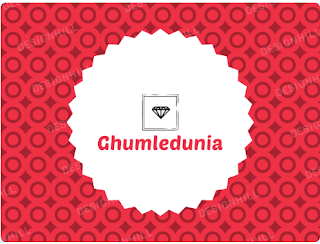Choosing the right theme for a website can be a crucial decision, as it can impact the overall look and feel of the site. Here are some considerations for choosing the best theme for different types of business niches:
1. E-commerce
For an e-commerce website, it's important to choose a theme that is optimized for selling products and includes features such as product listings, shopping carts, and payment processing. Look for themes that are clean and easy to navigate, with a focus on showcasing products in an attractive and user-friendly way.
2. Corporate
Corporate websites often require a professional and polished look, with a focus on communicating the company's values and services. Look for themes that have a clean and modern design, with a focus on typography and branding. Consider themes that include features like team member profiles, case studies, and client testimonials.
3. Creative
For businesses in creative industries like design or photography, it's important to choose a theme that showcases their work in an attractive and visually compelling way.
Look for themes that have a strong focus on images and visuals, with customizable galleries and portfolios. Themes with unique layouts and design elements can help creative businesses stand out from the crowd.
4. Blogging
For businesses that are primarily focused on content creation and blogging, look for themes that are optimized for readability and user engagement. Themes with clean and simple layouts, customizable typography, and easy-to-use navigation can help keep readers engaged and coming back for more.
5. Restaurant
For restaurants and other food-related businesses, look for themes that have a strong focus on visuals and can showcase menus and food photography in an attractive way. Consider themes that include features like online reservations, menu builders, and location maps.
When choosing a theme for a business website, it's important to consider not only the aesthetic appeal but also the functionality and features that are specific to the business's needs.
It's also important to choose a theme that is responsive and optimized for mobile devices, as more and more users access websites from their smartphones and tablets.
Select Themes Optimized For Mobile Devices
When choosing a theme for your website, it's important to ensure that it is optimized for mobile devices. Here are some steps you can take to make sure that the theme you choose is mobile-friendly:
1. Check the theme's demo on a mobile device
 Before purchasing or installing a theme, make sure to check its demo on a mobile device. This will give you an idea of how the theme looks and functions on a smaller screen.
Before purchasing or installing a theme, make sure to check its demo on a mobile device. This will give you an idea of how the theme looks and functions on a smaller screen.2. Look for themes that are responsive
Responsive themes are designed to automatically adjust to different screen sizes, ensuring that the website looks good on all devices. Look for themes that are labeled as "responsive" or "mobile-friendly."
3. Check for mobile-specific features
Some themes include mobile-specific features like touch-friendly navigation menus, optimized image sizes, and mobile-friendly layouts. Look for themes that include these types of features to ensure that your website is easy to use on mobile devices.
4. Test the theme on multiple devices
To ensure that your website looks and functions well on all types of mobile devices, test the theme on multiple devices, including smartphones and tablets. This will help you identify any issues or areas for improvement.
5. Use Google's Mobile-Friendly Test
Google offers a free tool called the Mobile-Friendly Test that allows you to test your website's mobile-friendliness. Simply enter the URL of your website and the tool will analyze it and provide feedback on how to improve its mobile-friendliness.
By taking these steps, you can ensure that the theme you choose is optimized for mobile devices and provides a great user experience for visitors accessing your website on their smartphones or tablets.
Responsive Themes In 2023
Here are some responsive themes that are popular and highly rated:
1. Astra
Astra is a lightweight and customizable theme that is optimized for speed and performance. It's compatible with popular page builders like Elementor and Beaver Builder, and includes a range of pre-made templates to choose from.
2. Divi
Divi is a popular theme that includes a powerful drag-and-drop page builder and a range of customizable layouts and modules. It's optimized for speed and includes features like split testing and conversion tracking.
3. OceanWP
OceanWP is a fast and lightweight theme that includes a range of customizable options and pre-built demos. It's compatible with popular page builders and includes features like a custom header and footer builder and a sticky header option.
4. GeneratePress
GeneratePress is a lightweight and SEO-friendly theme that includes a range of customization options and pre-built demos. It's compatible with popular page builders and includes features like a customizable header and footer, a sticky navigation bar, and mobile-specific settings.
5. Avada
Avada is a feature-rich and highly customizable theme that includes a powerful page builder and a range of pre-built demos and templates. It's optimized for speed and includes features like WooCommerce integration and a built-in mega menu.
These are just a few responsive themes that are popular and highly rated. When choosing a theme, it's important to consider your specific needs and requirements, as well as the functionality and features that are important for your website.
Themes With Built-in SEO Features
Many modern themes include built-in SEO features to help improve your website's search engine rankings. Here are some examples of themes with built-in SEO features:
1. Astra
Astra includes built-in schema markup for improved search engine visibility, as well as integration with popular SEO plugins like Yoast SEO and All in One SEO Pack.
2. Divi
Divi includes a range of SEO-friendly features, including the ability to add custom meta tags and descriptions, as well as integration with popular SEO plugins like Yoast SEO.
3. OceanWP
OceanWP includes built-in schema markup and meta tag options for improved search engine visibility, as well as integration with popular SEO plugins like Yoast SEO.
4. GeneratePress
GeneratePress includes built-in schema markup and options for optimizing page titles and meta descriptions, as well as integration with popular SEO plugins like Yoast SEO.
5. Avada
Avada includes built-in schema markup and options for optimizing page titles and meta descriptions, as well as integration with popular SEO plugins like Yoast SEO and All in One SEO Pack.
These themes are just a few themes that include built-in SEO features. When choosing a theme, it's important to consider your specific SEO needs and requirements, as well as the functionality and features that are important for your website.
Additionally, it's important to note that while themes can help improve your website's SEO, it's still important to follow best practices for on-page optimization and content creation to achieve the best results.
Best practices For On-page Optimization
Here are some best practices for on-page optimization that can help improve your website's search engine rankings:
1. Use descriptive and unique page titles
Each page on your website should have a unique and descriptive title that accurately reflects the content of the page. This can help improve your website's visibility in search engine results pages (SERPs).
2. Write high-quality meta descriptions
Meta descriptions are brief summaries of your page's content that appear in search engine results. Write a compelling and informative meta description that accurately reflects the content of the page.
3. Use header tags
Header tags (H1, H2, H3, etc.) help organize your content and make it easier for search engines to understand the structure of your page. Use header tags to break up your content and highlight important sections.
4. Optimize your images
Use descriptive file names and alt tags for your images to help search engines understand what the images are about. Compress your images to ensure that your pages load quickly.
5. Use internal linking
Link to other pages on your website within your content to help search engines understand the structure of your website and the relationships between your pages.
6. Use descriptive URLs
Use descriptive and readable URLs that accurately reflect the content of your page. Avoid using generic or meaningless URLs.
7. Optimize for mobile
Make sure that your website is optimized for mobile devices, as more and more users are accessing the web from their smartphones and tablets.
These are just a few examples of best practices for on-page optimization. By following these guidelines, you can help improve your website's search engine rankings and visibility. It's also important to create high-quality, informative, and engaging content that provides value to your users.
😎 Importance of Public Speaking Skills For Personality
✍ 25 Ways to Have SEO Success with Google
| Contents 🔽 |
|---|
| ➡ Select Themes Optimized For Mobile Devices |
| ➡ Responsive Themes In 2023 |
| ➡ Themes With Built-in SEO Features |
| ➡ Best practices For On-page Optimization |


















.png)









1 Comments
Great information for every blogger. Thank you for sharing!
ReplyDelete